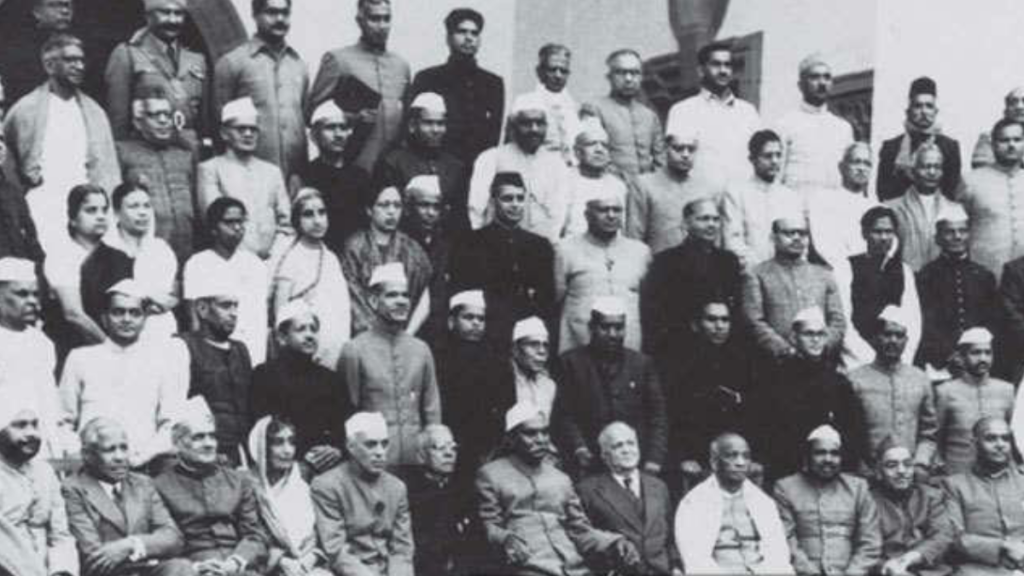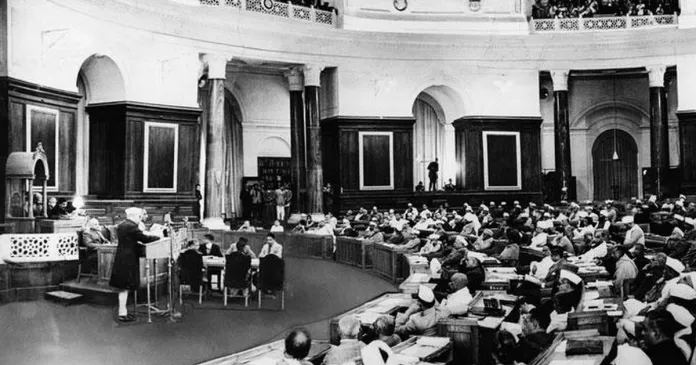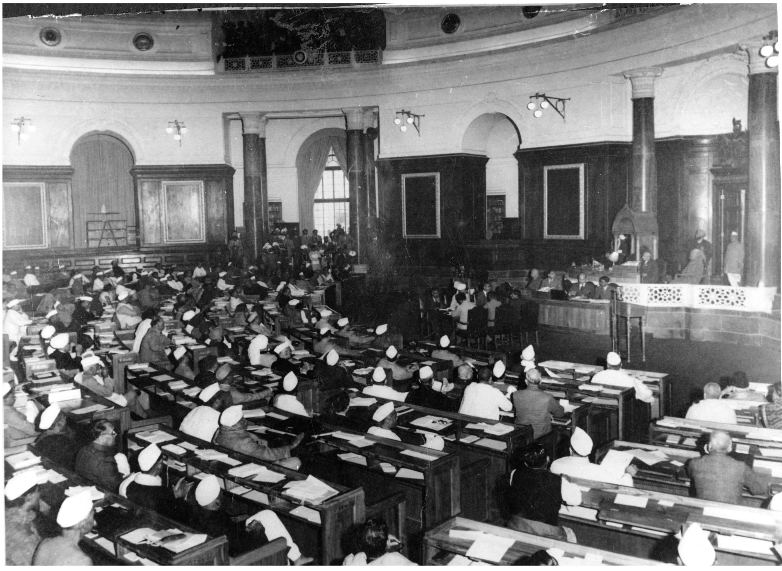First Historical Session of Indian Constituent Assembly The 9th of December 1946 marks a significant day in Indian history, as it witnessed the inaugural session of the Constituent Assembly of India. This landmark event laid the foundation for the creation of the Indian Constitution, which would become the guiding document for the world’s largest democracy. The first historical session was a momentous occasion, where Indian leaders from diverse backgrounds came together to shape the destiny of a newly independent nation.
The Constituent Assembly, comprising 389 representatives chosen from various Indian provinces, princely states, and special interest groups, gathered at the Constitution Hall in New Delhi. Their primary objective was to draft a Constitution that would reflect the aspirations and values of the Indian people, while ensuring principles such as justice, liberty, equality, and fraternity.

The session was illuminated by the presence of stalwarts like Dr. B.R. Ambedkar, Jawaharlal Nehru, Vallabhbhai Patel, Maulana Abul Kalam Azad, and many others, who would go on to play instrumental roles in shaping independent India’s future. These visionary leaders brought with them diverse perspectives, political ideologies, and experiences, setting the stage for a seminal discourse on India’s future governance.
Dr. Rajendra Prasad, a skilled lawyer and one of India’s most respected leaders, was unanimously elected as the President of the Constituent Assembly. In his inaugural speech, he envisioned the Assembly as the embodiment of hopes and aspirations and stressed the importance of collective effort to draft a constitution that would protect the interests of all citizens.
The foundation of the Assembly was built on principles of democracy, secularism, and equality, ensuring representation not only for various political parties but also for women, scheduled castes, scheduled tribes, and other marginalized sections of society. This holistic representation reflected a commitment towards inclusivity and social justice, which became a cornerstone of the Constitution’s ideals.

You can read our another post on Origin of Tantricism and Sixty-Four Yogini Cult in Odisha
The deliberations during the session centered around the core values that would define the Indian Constitution. Key issues discussed included the form of government, fundamental rights, minority rights, the role of the judiciary, and the division of powers between the center and the states. These discussions were marked by intense debates and ideological differences, but a spirit of compromise and consensus prevailed, emphasizing the Assembly’s commitment to democratic principles.
Perhaps the most significant outcome of the first historical session was the adoption of the Objectives Resolution on January 22, 1947, which laid down the guiding principles for the drafting of the Constitution. The resolution focused on securing justice, liberty, equality, and fraternity for the Indian people, and provided a framework within which the Constitution would be constructed.
The First Historical Session of the Indian Constituent Assembly was a true reflection of India’s diversity, with representatives from different regions, religions, and cultural backgrounds coming together for the greater good. It showcased the country’s commitment to democratic values and the belief that through dialogue and consensus, a united and strong India could be built.
This session marked the beginning of a rigorous and painstaking process that would eventually result in the Indian Constitution being adopted on November 26, 1949. The document, which stands as a testament to the ideals of justice and equality, has been the bedrock of Indian democracy for over seven decades.
The First Historical Session of the Indian Constituent Assembly was not merely a ceremonial gathering; it was a transformative moment in Indian history. It was a collective effort to build a nation on the pillars of democracy, secularism, and inclusivity. It symbolized unity in diversity, and showcased the ability of the Indian leadership to navigate through differences and work towards a shared goal.
As we celebrate the legacy of the Constituent Assembly, we pay tribute to those who dedicated their lives to drafting a constitution that would guarantee the rights and freedoms of every Indian citizen. The First Historical Session will forever be etched in the annals of Indian history, a testament to the spirit of nation-building and a reminder of the power of democratic ideals.

Write A FAQ For First Historical Session of Indian Constituent Assembly
When was the first historical session of the Indian Constituent Assembly held?
The first historical session of the Indian Constituent Assembly was held on December 9, 1946.
Who presided over the first session of the Indian Constituent Assembly?
Dr. Sachchidananda Sinha, the oldest member of the Assembly, presided over the first session.
What was the significance of the first session of the Indian Constituent Assembly?
The first session marked the commencement of the process of drafting the Constitution of India. It laid the foundation for the democratic principles and laws that would govern the nation.
How many members were present at the first session of the Indian Constituent Assembly?
Out of the total 389 members, around 211 members were present at the first session.
What were the key discussions and decisions made during the first session of the Indian Constituent Assembly?
The first session primarily focused on the objectives and principles that would guide the drafting of the Constitution. It involved discussions on issues like fundamental rights, the structure of the government, and the relationship between the Union and the States. Several committees were also formed to streamline the drafting process.
